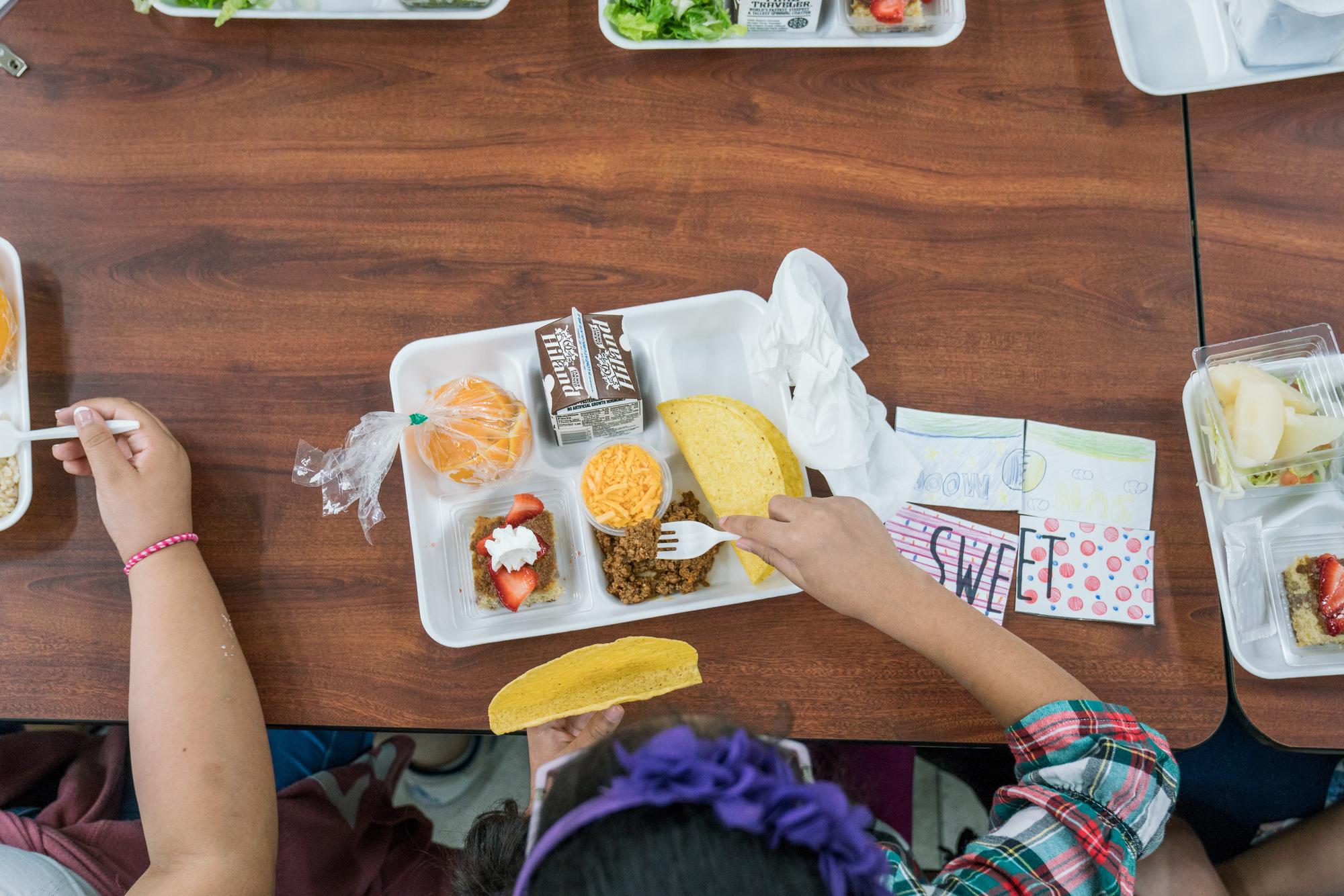Starting 2023 Strong For School Meals: January/February Policy Updates
Gearing up for the Farm Bill, advocating for School Meals For All, and more.
Gearing up for the Farm Bill, advocating for School Meals For All, and more.

We’re two months into a new year, and there’s already been plenty of activity when it comes to policies addressing food in schools, child nutrition, and more. Here’s a look at the last two months of policy and advocacy on behalf of kids’ health and well-being.
The update: In January, the 118th Congress—the most racially and ethnically diverse class of federal legislators in U.S. history—began. This Congress has divided chambers as a result of the 2022 election; the House is controlled by the Republican Party by a slim margin, and the Senate is controlled by the Democratic Party also by a slim margin. If you followed the news, you saw a glimpse of the consequences of slim margins during the unprecedented House Speaker election, delaying the swearing-in ceremony for the members of the House.
Now that members in both chambers are sworn in, the new Congress is on its path to tackle the long list of important issues on its plate. On the major priority list is passing the reauthorization of the Farm Bill.
Why it matters: The Farm Bill is a major investment in our farmers, our food system, and our kids. The last Farm Bill was passed in 2018 and is set to expire this September.
FoodCorps is working toward an ambitious goal: that by 2030, every child has access to food education and nourishing food in school. This means we’re deeply invested in the Farm Bill, which has significant impacts on school meals.
What you can do: Read our blog post about the Farm Bill and sign up for FoodCorps Action Alerts to raise your voice at key moments.
The update: A pandemic-era boost to SNAP allotments is set to come to an end on March 1. These allotments gave qualified families extra funds for groceries as a response to the economic impacts of the COVID-19 pandemic. It’s estimated that average SNAP participants will receive between $90 and $250 less in benefits each month.
Why it matters: SNAP is a critical resource for the millions of families who need extra support to make ends meet, especially those impacted by systemic racism and classism. The economic impacts of the pandemic will affect these families for years to come. Losing access to these extra SNAP funds will mean additional hardship for many families.
What you can do: Learn more about the impact of ending this benefit, including resources for families who need support navigating this change.
The update: At least 14 states have introduced legislation supporting free school meals for all students. FoodCorps has been working closely with partners in a few key states to garner support for these efforts.
In New Mexico, a state with one of the highest hunger rates in the nation, FoodCorps spearheaded a campaign in which partner organizations urged the state legislature to adopt free school meals. We also celebrated Gov. Michelle Lujan Grisham’s extraordinary Food Initiative, a $24.7 million commitment to food and farming in the state. And in Connecticut, we supported the launch of a statewide School Meals for All campaign, including a press conference to shine a spotlight on the impact this initiative could have. These efforts are paying off: in early February, the Connecticut state legislature passed an emergency certification to fund School Meals for All through the rest of the school year.
Why it matters: School Meals for All is a proven way to increase participation in school meals, advance equity in classrooms and cafeterias, and ensure more kids are nourished and ready to learn. As the federal government hesitates on free school meals for all, state-level initiatives like these are increasingly important.
What you can do: Read this important resource from our partners at the National Farm to School Network to learn more about free school meals campaigns in each state.
The update: The USDA announced a proposed rule to update nutrition standards for school meals. While the rule largely focused on gradually adjusting the nutritional value of foods offered at school, it also included provisions for supporting schools in using more locally procured foods, as well as offering foods that are culturally relevant.
The USDA held numerous listening sessions before developing this proposal. Now they want to hear from stakeholders—including parents, students, school district leaders, and food suppliers—before finalizing this rule.
Why it matters: Increasing connections between schools and local food producers is a crucial way to support local economies, shorten supply chains, and build relationships that help kids learn where their food comes from. Local food is a win for kids, farms, and communities.
What you can do: Share your thoughts on the proposed rule directly with the USDA during the comment period through April 10.

Our 2024 Child Nutrition Policy Year in Review

9 Thoughtful Holiday Gifts Made by FoodCorps Alumni

The Policy Brief, Fall 2024: After the Election